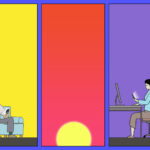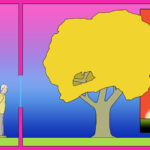This page is a list of manual and protocol highlights, page references, and definitions for people who are engaged in Cognitive Processing Therapy for trauma symptoms and/or PTSD.
Page numbers are from Cognitive Processing Therapy for PTSD: A Comprehensive Manual by Patricia A. Resick, Candice M. Monson, and Kathleen M. Chard, Guillford Press, 2016.
Here is a compilation of CPT resources.
CPT is usually conducted in 12 sessions. The first 6 sessions teach a set of skills in sequence, culminating in use of a synthesis of these skills through the Challenging Beliefs Worksheet (CBW). In subsequent sessions, individuals then use CBWs to address on-going challenges and broader areas of concern common to people who have experienced trauma.
To self-conduct CPT using the manual, to follow along in the manual during sessions with a counselor, or to deepen understanding of CPT, individuals might begin by reading the goals and lists of procedures at the start of each chapter, then supplement their reading with the following:
Sections in quotes. Within the text of the manual are sections in quotes. These are examples of how counselors might convey CPT concepts to clients. According to one of CPT’s inventors, Dr. Patricia Resick, fidelity to the protocol improves outcomes. Since the primary goal of CPT is for individuals to develop a therapeutic inner dialogue and become their own counselors, reading these sections ensures individuals receive, with precision, exactly the content the inventors intended, thus increasing the probability of favorable outcomes.
Dialogues. Also within the text are hypothetical dialogues between counselors and clients formatted as play scripts. Reading these may also be helpful.
CPT Glossary
Just-world belief. “The just-world belief holds that good things happen to good people, that bad things happen to bad people, and that the world should be a fair and just place. This belief emanates from the desire to find an orderly, cause-effect association between an individual’s behavior and the consequences of that behavior…this is a hard-wired, evolutionary need of humans to predict and control events in order to survive.” (65) Further, the just-world hypothesis holds that hard work will be rewarded, bad deeds will be punished, “things happen for a reason,” “what goes around comes around,” and that self, others, and the world should be controllable, orderly, and predictable. In contrast, reality is complex. Some occurrences have no discernible origin, causality, or meaning.
Accommodation, over-accommodation, assimilation. In CPT terms, the goal of trauma therapy is accommodation, i.e. the successful alteration of prior beliefs to accommodate the facts of what happened as unfortunate rather than meaningful about oneself, others, or the world. Over-accommodation is altering beliefs excessively and overgeneralizing inaccurately (e.g. “I can’t do anything right”). Assimilation is absorbing traumatic experiences into one’s current, distorted beliefs without altering them, often by discounting one’s own reality and attributing self-blame or other-blame (e.g. “It wasn’t really a punch/rape, just a misunderstanding. I/they must not have communicated correctly.”) In CPT, rather than avoid the reality of what happened, people approach it and are supported in tolerating the distress that results. They work to challenge and alter assimilated and over-accommodated beliefs.
Accommodation is typically understood as a healthy outcome of trauma, whereby the individual incorporates novel information or beliefs into existing beliefs and successfully adapts to changes while maintaining realistic expectations (Sobel, Resick, & Rabalais, 2009). For example, if a friend passes away from a car accident, one may incorporate this event into beliefs of the world in the regard that “sometimes accidents happen.” On the other hand, assimilation refers to the process of altering novel information to match prior beliefs. In this case, facts about death are changed or altered to fit in with previous beliefs. Using the example of the car accident, assimilated beliefs would alter the details of the accident to maintain preexisting beliefs about the world or sense of control. For example, the preexisting belief that “good things happen to good people, bad things happen to bad people” may lead to “the deceased could have done something to prevent it.” Finally, as one incorporates novel information into existing beliefs, there may be extreme instances whereby he/she adopts entirely new beliefs to feel safer and more in control. For example, in the event of the car accident, one may swear off driving for the rest of his or her life, with the belief that “driving is completely dangerous” or “no other drivers can be trusted.” This overaccommodation of one’s beliefs can also be problematic as an outcome, as it is unbalanced and may affect the way in which an individual interacts with reality and lead to behavioral avoidance (Resick et al., 2014).
– Liu et al., 2019 (my bold)
Index trauma. After creating a timeline of significant life events, also termed a “trauma history” (see pages 38-40 ), the trauma experience creating the most current challenges is termed the “index trauma.” If you are a client, I may have shared through the client portal an in-house handout explaining this process.
Impact Statement. The homework created after Session 1 (described in Handout 5.3, page 100) is termed the “Impact Statement.” This is a brief narrative describing why the individual thinks the index trauma occurred.
Stuck Points. A “Stuck Point” is the CPT term for what is termed in cognitive theory a “cognitive distortion.” From page 95: “A Stuck Point is a thought that you probably formed during or shortly after the trauma about why the trauma happened or what it means about yourself, others, and the world. It serves to keep you stuck in place and stops your recovery and growth.”
Helpful readings about Stuck Points and cognitive distortions:
- Handout 5.2, page 99: What Are Stuck Points?
- Handout 6.4, pages 130-131: Stuck Point Help Sheet
- Therapist Stuck Point Guide, pages 113-115
- Checklist of Cognitive Distortions by David Burns, Ph.D.
- Common Cognitive Distortions with Simple Definitions
Primary feelings are natural feelings, evolved to be experienced by the human brain to provide data about surviving and thriving, that happen automatically without thought: mad, sad, glad, afraid, surprised, disgusted, alarmed (includes fight-flight-freeze response).
Secondary feelings happen as a result of thoughts – often thoughts that are opinions, beliefs, or rules – that cause feelings of shame, guilt, humiliation, self-blame, mistaken other-blame, regret, rage, dread, panic, despair, nostalgia, jealousy, righteousness, vengeance, and “ideations,” i.e. intrusive thoughts or fantasies of harm to self or others. Secondary feelings that result from thoughts cause suffering through 1) escalating natural feelings, 2) causing painful feelings, 3) creating a sense of “no escape,” which can result in feelings of rage, helplessness, and hopelessness, 4) increased reactivity vs. conscious choice, and 5) creating troubled interactions with others.
Thought logs. “A fire in a fireplace has a lot of heat and energy, like emotions, and you may not want to get too close. If you just sit there and watch the fire and do nothing to it, what happens? [A client usually says, “It burns out.”] Yes, it can’t keep burning forever unless it is given more fuel. That’s what natural emotions from the traumatic event do: They burn out if you just feel them until the energy has burned out of them. But what if you throw ‘thought logs’ on this emotion fire, like ‘It’s all my fault,’ ‘I’m so stupid,’ or ‘I should have known it was going to happen’? You can keep that fire blazing as long as you keep throwing thought logs on that fire. The problem is that these are not the natural emotions from the event. The fire does not burn out, because it is being fueled by different thoughts like self-hatred, blaming people who weren’t responsible for that particular event, thinking that all people are bad or untrustworthy, and so on. In this therapy, what we want to do is allow the natural emotions to burn down naturally, which does not take very long, and to take away the fuel that has been keeping the other emotions burning hot by changing any extreme or inaccurate thoughts.” (93)
. . . . .
At the CPT training I attended with Dr. Patricia Resick, a founder of CPT, she stated, “Fidelity to the protocol improves outcomes.” Stated numerous times in the manual is the primary goal of CPT being to help people become their own cognitive therapists. If at all possible, I invite you to purchase a manual so you can deepen your understanding of the concepts and self-administer CPT as much as you wish.
How to become one’s own cognitive therapist.
Step-by-step CPT guide for clients.
Since the content covered in Session 1 is foundational, reading the sample explanatory narratives in quotes might be helpful:
- Page 87 on PTSD
- Pages 89-91 on cognitive theory
- Page 93 on secondary feelings, termed “manufactured emotions” in CPT; includes the “thought log” metaphor
- Pages 95-96 for an overview of how CPT works
- In addition, this quote from the explanatory text on page 93 with regard to primary feelings (natural human feelings that occur without thought) and secondary feelings (feelings that occur as a result of thoughts, often as self-critical or self-alarming beliefs): “Labeling one’s emotions and keeping the PFC [prefrontal cortex] active by talking about the trauma rather than reliving it may be the most effective means of teaching the client affect regulation.”
Narrative sections for Session 2 are here:
- Pages 107-108 on the interrelationship between feelings and thoughts
- Page 111 on how the ABC Worksheets help individuals examine the interrelationship between feelings and thoughts
- Page 116 on the impact of thoughts on feelings and progress
Individuals can continue to page through the manual as they progress through the sessions, reading sections as they choose, with particular attention to sections in quotes and formatted as dialogues.
The narrative for counselors describing power and control issues to cover in Session 10 on pages 195-197 may be extraordinarily helpful to read.
The Practice Assignment after Session 10 of CPT (Handout 9.8) includes the assignment to give and receive compliments. For assistance, please review Handout 9.7 Esteem Issues Module (pages 210-213). In addition, this guide on giving and receiving compliments assertively may be helpful.
Session 6-12 module titles, handout numbers, and page numbers:
- Safety, Handout 8.3, page 182
- Trust, Handout 9.1, page 199
- Power/Control, Handout 9.4, page 205
- Esteem, Handout 9.7, page 210
- Intimacy, Handout 10.1, page 226
If you are in need of assistance with emotion regulation, distress tolerance, or self-soothing as you engage in CPT, please try these exercises from DBT Skills Training Handouts and Worksheets, Second Edition, Marsha Linehan, 2014. If you are a client, they are available in the Awareness Skills packet available through the client portal.
- Self-Soothing, page 30
- Check the Facts, page 32
- Examples of Emotions That Fit the Facts, page 33
- Pleasant Events List, pages 34-36
- Values and Priorities List, page 37
Consider completing the self-care checklist on pages 28-29 in Help That Helps or the Awareness Skills Self-Assessment.
This content is for informational purposes only and is not a substitute for medical or professional advice. Consult a qualified health care professional for personalized medical and professional advice.

